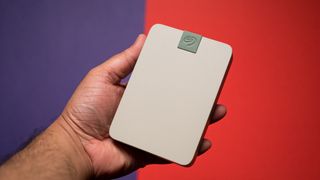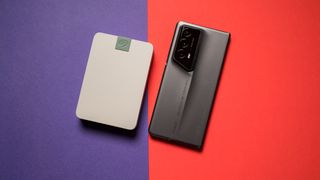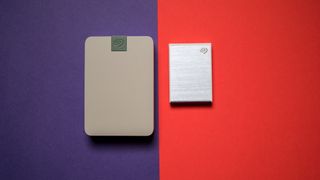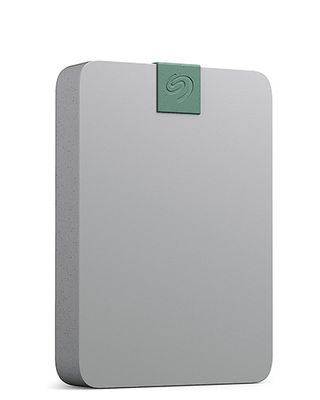I used an external HDD after a decade, and it was surprisingly good
Seagate's Ultra Touch is a good choice if you need plenty of storage for archival needs.

The last time I used an external HDD was back in college; I had two 3.5-inch external HDDs to store most of the data, but I wanted something that was portable and didn't need an auxiliary power source, so I got a 2.5-inch Western Digital drive. It was decent enough at the beginning, but it didn't take long for the connector to start acting up — it would lose connection every time I looked at it — and the drive was slow even by early 2010s standards.

In Hardwired, AC Senior Editor Harish Jonnalagadda delves into all things hardware, including phones, audio products, storage servers, and routers.
Using the drive made me realize I needed a long-term solution that was actually reliable, and that's how I got started with home NAS servers — in a sense, I should be thankful I picked up that drive. Anyway, my data these days is housed entirely in NAS servers, and I use a smattering of external SSDs if I need storage on the go. As such, I haven't paid much attention to external HDDs, but given that they still sell in considerable numbers, I wanted to see if things have changed.
I got started with Seagate's Ultra Touch and LaCie Mobile Drive, and both have proven to be highly reliable in just over a month of use. The Ultra Touch in particular is very intriguing; Seagate uses 30% post-consumer materials in the chassis, and the drive itself is small enough that you can just throw it (gently) in a bag. The biggest plus point is that it connects over USB-C, and I had zero issues using it with my Windows machine.

Other niceties include AES-256 encryption, giving you the ability to easily safeguard the data on the drive. There is no audible noise when using the drive, and even after transferring a sizeable chunk of data, it didn't get too hot.
While there has been a lot of innovation in the HDD segment in recent years — including helium-encased drives and emergence of HAMR tech — that has all been aimed at 3.5-inch options, and 2.5-inch drives are relatively unchanged. The only key difference is that most of these drives now connect over USB-C.
I tested the Ultra Touch extensively over the course of the last month, and the drive routinely averaged transfers of 135MB/s, which is more than adequate if you just need a reliable drive for daily use. Granted, an external SSD will go up to 660MB/s on average when transferring data from an internal NVMe drive.

But there's another factor at play, and that is pricing. The Ultra Touch costs $165 for the 5TB version, and that comes out to $33/terabyte. There isn't an equivalent SSD, but the Crucial X9 Pro will set you back by $260 if you get the 4TB model, coming out to $65/terabyte — double that of the HDD.
Get the top Black Friday deals right in your inbox: Sign up now!
Receive the hottest deals and product recommendations alongside the biggest tech news from the Android Central team straight to your inbox!
Obviously, an external SSD has much faster transfers, is noticeably smaller, and will last longer. But if you want to maximize storage value, an external HDD still has a lot to offer in 2024. I'll be conducting long-term tests to see how these drives measure up as that will be a better indicator to their reliability, but if you have a lot of data and are looking to get an external drive for archival, the Ultra Touch ticks all the right boxes.

The Ultra Touch 5TB drive has a good design that's easily portable, connects over USB-C, and holds up incredibly well in daily use.

Harish Jonnalagadda is Android Central's Senior Editor of Asia. In his current role, he oversees the site's coverage of Chinese phone brands, networking products, and AV gear. He has been testing phones for over a decade, and has extensive experience in mobile hardware and the global semiconductor industry. Contact him on Twitter at @chunkynerd.